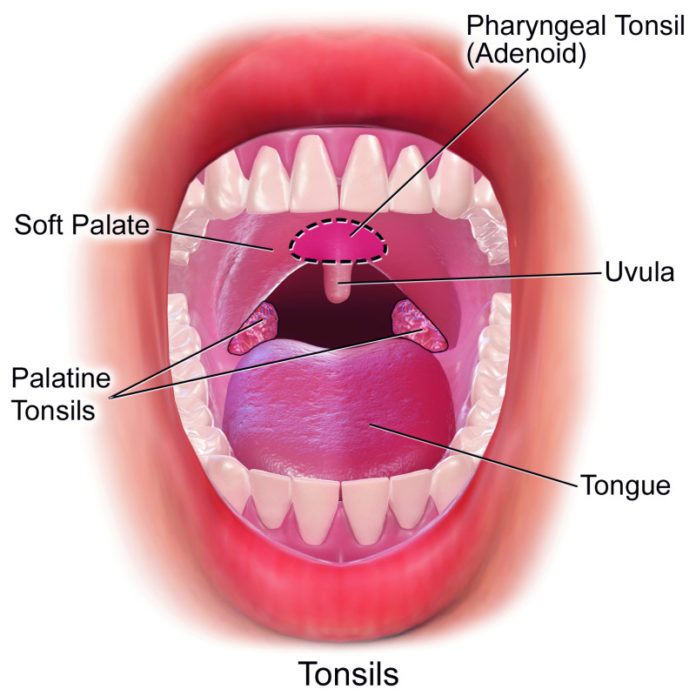
Surgical removal of the tonsils and adenoids in children suffering from sleep apnea is associated with decreased asthma severity, according to the first large study of the connection, published in the journal PLOS Medicine.
Researchers from the University of Chicago found that in the first year after the operation, children who had the surgery had a 30 percent reduction in acute asthma exacerbations and a 38 percent decrease in acute status asthmaticus — a medical emergency.
They also found pediatric patients who received the surgery had a 36 percent reduction in asthma-related hospitalizations and a 26 percent decline in asthma-related emergency room visits. Children who did not have the surgery did not have significant reductions.
“Several small studies have described a strong association between obstructive sleep apnea and asthma, two common inflammatory conditions that impair breathing in children. But we wanted to test the strength of the connection when studied in a much larger population,” said the study’s lead author, Rakesh Bhattacharjee, MD, assistant professor of pediatrics at the University of Chicago and an authority on pediatric sleep medicine.
“Our study adds weight to the growing sense that obstructive sleep apnea aggravates asthma and further tips the balance toward early identification of obstructive sleep apnea,” he said. “This will help physicians advocate for surgical intervention, not just to eradicate sleep-disordered breathing, but also to reduce asthma severity and decrease reliance on medications in asthmatic children.”
Bhattacharjee said a prospective, randomized, controlled clinical trial is still needed to show a direct causal relationship.
Asthma is a common and costly respiratory disease. It is the third-most prevalent chronic pediatric disease in the United States, affecting an estimated 7.1 million children under the age of 18, according to the Centers for Disease Control and Prevention. It’s also the third-most common cause of hospitalization of U.S. children under age 15. In 2009, more than 770,000 pediatric emergency room visits were related to asthma. The direct health care costs of childhood asthma exceed $50 billion a year, according to a 2011 study.
Obstructive sleep apnea also is common, affecting an estimated two to three percent of all children. It involves inflammation of the tonsils and adenoids. This swelling narrows a child’s upper airway, which episodically collapses at night. This disrupts breathing and interrupts sleep, often hundreds of times each night. Surgical adenotonsillectomy — removal of the adenoids and tonsils — is the standard therapy.
The study involved data on more than 40,000 children between the ages of 3 and 17, obtained from Truven Health’s MarketScan® databases. It included 13,506 U.S. children with asthma who underwent removal of their adenoids and tonsils as treatment for obstructive sleep apnea. The researchers compared their asthma symptoms from the year before surgery to the year afterwards.
They also compared those results to 27,012 children with asthma — carefully matched in a 2:1 ratio for age, sex and location — who retained their tonsils and adenoids.
Adenotonsillectomy brought significant improvement on several key measures. For children who had surgery, the frequency of acute status asthmaticus — episodes of severe asthma that do not respond to repeated courses of therapy — fell 38 percent, from 562 in the year before surgery to 349 in the year after. In children who did not have surgery, such severe asthma attacks also decreased, but only by 7 percent, from 837 in the year before surgery to 778 in the following year.
Acute asthma exacerbations fell 30 percent, from 2,243 before surgery to 1,566. Exacerbations for children who did not have surgery fell only two percent, from 3,403, to 3,336.
The incidence of secondary asthma outcomes, such as acute bronchospasm and wheezing, decreased significantly for those who had surgery but was unchanged for those who did not. Prescription refills followed the same pattern.
The authors note several concerns about their data. The MarketScan database includes only patients with private insurance, not those with government coverage or no health insurance. Nor is it clear from the available data why patients underwent adenotonsillectomy, although the vast majority of such procedures are performed for sleep apnea.
Despite the limitations, they emphasize that the many plausible connections that link obstructive sleep apnea to asthma. Both are inflammatory diseases. They share risk factors such as allergies, obesity and exposure to tobacco smoke. Severe obstructive sleep apnea is often associated with poorly controlled asthma.
The journal’s editors, in a brief summary, note that adenotonsillectomy is associated with some risks, but note that the study’s findings “suggest that the detection and treatment of adenotonsillar hypertrophy may help to improve asthma control in children.”
Story Source:
The above story is based on materials provided by University of Chicago Medical Center. Note: Materials may be edited for content and length.
Journal Reference:
- Rakesh Bhattacharjee, Beatrix H. Choi, David Gozal, Babak Mokhlesi. Association of Adenotonsillectomy with Asthma Outcomes in Children: A Longitudinal Database Analysis. PLoS Medicine, 2014; 11 (11): e1001753 DOI: 10.1371/journal.pmed.1001753
